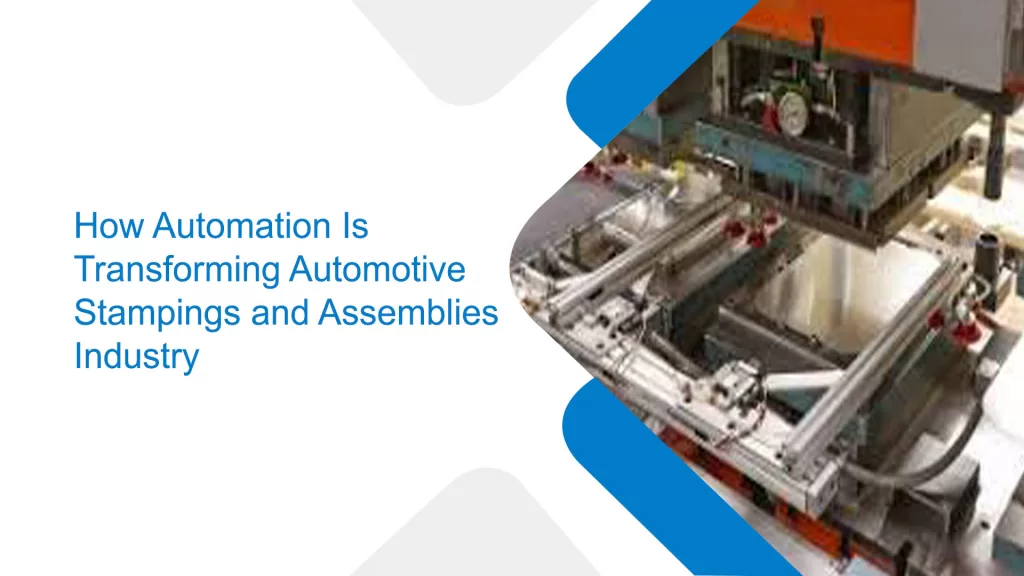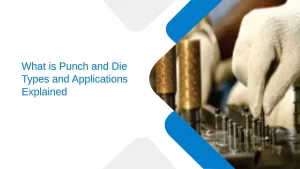How Automation Is Transforming Automotive Stampings and Assemblies Industry
- Automotive & Ancillary |
- Jul 4, 2025

The last few years have brought unprecedented change to the automotive industry. Smart technologies have enhanced every aspect of the process; from the safety and precision of metal stamping to the integration of the vehicle manufacturing. The industry is in the midst of a transformation driven largely by automation.
We first noticed the use of automation in the automotive industry in the form of assembly lines. Through the years, automation has evolved and has been able to stamp and assemble automotive parts more efficiently.
Let us examine how change is taking place in the automotive industry.
What Automation Achieves in Vehicle Production
The automotive manufacturing industry has been able to achieve higher productivity through automation. Smart devices and robots are now able to perform tasks that required hours of stoop labor.
The automated stamping of parts and precision sheet metal cutting have significantly enhanced productivity in the automotive industry. Modern stamping machines are able to perform tasks more accurately, thus significantly cutting down waste and improving production. However, speed is not the only important factor in automation. The focus is also on ensuring safety, maintaining consistency, and quality control. Robots can work in hazardous environments and dangerous locations, and they can always be counted on to deliver the same results. This reliability is what makes automation advantageous in processes such as automotive stampings and assemblies.
The Application of Robots in Car Manufacturing
You might be surprised to discover how prevalent the use of robots in car manufacturing is. Robots can be seen on the factory floor performing various tasks such as welding, painting, stamping, and assembly of the parts into the car.
Today, robots are equipped with sensors, artificial intelligence, and even machine learning. They can not only execute tasks, but also make adaptive changes. Robots, for example, are able to autonomously adjust the positioning of panels to ensure they are properly aligned, even if they are placed slightly askew.
The highest level of automation is found in the plants that use a large number of robots to fully assemble the vehicles. This reduces the impact of human error as well as the overall costs associated with productivity. Additionally, this allows human workers to focus on more complex and interesting tasks instead of choosing to spend their time on straightforward work.
Advantages of Automation in Stamping and Assembly
Why are companies investing in the automotive stampings and assemblies in the automotive industry?
Below are some informative explanations:
- Increased output: Productivity increases due to automation of processes such as transportation with the use of conveyor belts and stamping and assembly line processes, which are performed by machines at a faster rate than humans.
- Enhanced precision: Robots can do metal stamping with 100% precision.
- Cost-effective: Apart from the Setup costs, the automation of processes results in huge savings in the human workforce as well as in materials that would have otherwise been wasted.
- Enhanced protection of workers: Jobs that require the use of machines that may pose a danger to employees have been made safer due to the use of machines. Employees working in such environments can incur fewer injuries.
With the full automation of vehicles by modern sophisticated machines that are capable of metal stamping, the processes of making cars are faster, more reliable, as well as less dangerous.
The Smart Machine in Car Factory
For the entire manufacturing of a vehicle, big data, automation, as well as AI that are employed in the production are pivotal to the automobile industry.
How far automation has advanced can be best illustrated with the car industry’s assembly line. What we are referring to here are self-learning machines, predictive maintenance systems, and real-time communicating systems.
In our future, we can expect to see the following:
- More AI integration: machines interpreting the data and making decisions.
- More Use of Collaborative Robots (Cobots): These robots work directly with individuals to improve safety and efficiency.
- Digital Twins: virtual replicas of production systems that allow for performance testing and enhancement.
It’s not solely a shift in technology; it’s a shift in strategy. Manufacturers, for example, would previously rely on automation to drive productivity. Now, they view it as a means to remain competitive, adapt to dynamic market shifts, and meet growing customer demands.
Problems and Things to Consider
Even if the advantages are undeniable, the gaps in fully automating remain. The first major concern is cost. Smaller providers, for example, would have a difficult time keeping up with the initial investment incurred from advanced robotics and automation.
That being said, there certainly needs to be specialized professionals to manage these modern systems. That is the reason why technology is as important as the training and development of the workforce.
On the other hand, businesses that are able to strike the right balance between people and technology are reaping the benefits of improved safety, quality, and efficiency.
Conclusion: Automation in the Car Industry
The processes of stamping and assembling automotive parts have undergone modernization. These are processes that required significant human and financial resources and have now been streamlined.
Automation has been the driving force of the transformation in the automotive manufacturing industry, from intelligent factory floor robots to state-of-the-art stamping machines. Car enthusiasts, factory managers, and anyone else interested in the manufacturing of cars can agree on one thing: automation is an integral part of the industry.
The next time you encounter an automobile as it is part of the production line, ponder for a second about the effect automation has on the industry and the transformation it continues to bring.




